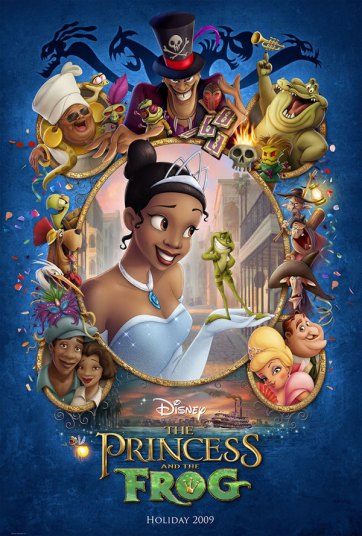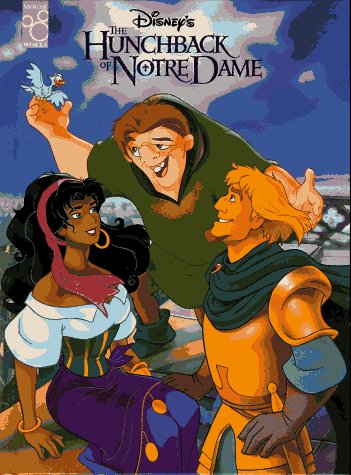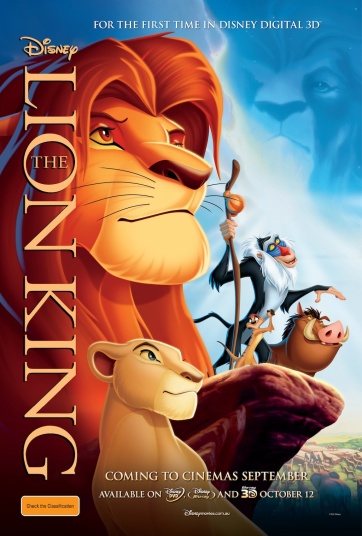Over the past several decades, scholars from all over the world have questioned the lack of diversity in Disney films. The anthology Diversity in Disney Films: Critical Essays on Race, Ethnicity, Gender, Sexuality, and Disability consists of eighteen essays, all edited by Johnson Cheu. The essays question the hidden lack of diversity in what are considered Disney’s most diverse films. It is divided into four sections that centre on the four different topics being discussed: “Beyond the Fairest: Essays on Race and Ethnicity,” “Traditions and Transformations: Essays on Gender and Sexuality,” “Of Beasts and Innocents: Essays on Disability,” and “Up and Out: Essays on Reimagining’s and New Visions” (which talks about where Disney is headed in terms of diversity).
Cheu is a professor at Michigan State University. He started questioning proper representations of diversity, gender, sexuality, and disability in Disney films since he was putting a university class together in 2008. He discovered the lack of writing and talk about Disney’s content within the films, and instead noticed that there’s been plenty of talk and classes that centre on how well the company has been fairing in a business-like way over the last 90 years. Cheu explained that he chose essays that “encompass a wide range of films as well as being cognizant of fresh theoretical approaches” (page 4). Therefore, he chose essays that had a well written argument and that stood out among others, with each author writing in his or her own tone and often from personal experience.
I went into this anthology knowing that it was going to show me the lack of diversity present in Disney. The authors of the essays in the book researched and tore apart the Disney films they had a problem with, putting more thought into how offensive some of the movies really are, and probably taking many months to do so. These essays are opinionated and include a lot of secondary sources to back their claims. I think we need to read critical essays like this, especially about an enterprise that’s so popular and has such a huge impact on the world, to help us understand and learn what we are doing wrong in society and how we can do it better, in terms of diversity.
I’ve noticed online in the last few weeks alone how annoyed people are becoming about diversity, or rather, a lack thereof. People of colour are speaking out against “White Hollywood” and Diversity in Disney Films uses examples in animated films to show the lack of proper representation. It isn’t just discussing the lack of race representation, but also the lack of proper gender, sexual, and ethnic representation as well.
The essay “Blackness, Bayous and  Gumbo: Encoding and Decoding Race in a Colourblind World” by Sarah E. Turner critiques Disney’s 2009 film The Princess and the Frog. She shares that the film itself is not diverse because there isn’t any saying in the movie that Tiana, or any other person of colour character, is in fact black. Turner argues in the essay that “Tiana seems to exist in a world where her corporality and her race are non-existent” (page 90), and that “no mention is made of her appearance in Kurtti’s book (at the beginning of the movie); unlike Charlotte, whose hair and eyes are described, or Naveen or Ray, both of whom are grounded in physical rhetoric” (page 89). Essentially, race was completely erased in terms of colour, but the white characters had their physical traits described and were often described as beautiful, like in Tiana’s childhood friend, Charlotte’s case.
Gumbo: Encoding and Decoding Race in a Colourblind World” by Sarah E. Turner critiques Disney’s 2009 film The Princess and the Frog. She shares that the film itself is not diverse because there isn’t any saying in the movie that Tiana, or any other person of colour character, is in fact black. Turner argues in the essay that “Tiana seems to exist in a world where her corporality and her race are non-existent” (page 90), and that “no mention is made of her appearance in Kurtti’s book (at the beginning of the movie); unlike Charlotte, whose hair and eyes are described, or Naveen or Ray, both of whom are grounded in physical rhetoric” (page 89). Essentially, race was completely erased in terms of colour, but the white characters had their physical traits described and were often described as beautiful, like in Tiana’s childhood friend, Charlotte’s case.
 Another essay “’You’re a surprise from Every Angle:’ Disability, Identity, and Otherness in The Hunchback of Notre Dame” by Martin F. Norden argues that The Hunchback of Notre Dame (1996) did not truly represent Quasimodo’s disability well. Norden says that Quasimodo was not represented
Another essay “’You’re a surprise from Every Angle:’ Disability, Identity, and Otherness in The Hunchback of Notre Dame” by Martin F. Norden argues that The Hunchback of Notre Dame (1996) did not truly represent Quasimodo’s disability well. Norden says that Quasimodo was not represented
in a truly humane matter, and that Quasi is “frequently contextualized in beast-like terms” (page 166). Norden argues that Quasimodo was conditioned to think of himself in subhuman terms, especially when he tells his stepfather that he is a monster. Quasi is also very young, only twenty years old in the film, and he spent his whole life up to that point locked up in a tower, hidden from everybody. Norden wrote “it seems to preach tolerance of society’s Others while criticizing attempts to segregate and isolate them, yet it relies on age-old stereotypes and other forms of outdated thinking about people with disabilities to propel its narrative” (page 174). Therefore, The Hunchback of Notre Dame reinforces negative beliefs about the disabled, which causes problems for those more directly involved, such as those with a disability.
I do feel this book really showed the aspects of lack of diversity in Disney and how its been that way since it released its first full length film in 1937 (that being Snow White and the Seven Dwarfs). In a constantly changing world, Disney puts racist stereotypes within their films, which in turn offends those that it discriminates against. These essays suggest that Disney still has a lot of growing and learning to do on how to properly represent race, ethnicity, gender, sexuality, and disability in the films.
I did not however, agree with all of the aspects of all the essays. I think that yes, Disney needs to be more careful in how it chooses to represent all future characters (like Disney’s first Hawaiian princess), but at the end of the day these are just movies. Yes, I want proper representations in movies, and starting with kid’s movies is the way to go, but these essays also really read in between the lines, noticing and commenting on things that the authors researched on for months on end. Are people truly going to spend several months after watching a movie to research and understand Disney’s underlining lesson and how it wasn’t properly represented in each film? Probably not.
 For example, in the essay “What Do You Want Me to Do? Dress in Drag and Do the Hula?’ Timon and Pumbaa’s Alternative Lifestyle Dilemma in The Lion King” by Gael Sweeney, argues that The Lion King (1994) had the first openly gay Disney animated characters, being the movies comedy effect, Timon and Pumbaa. Sweeney said that Timon and Pumbaa’s sexuality was represented stereotypically and also takes away from the main message of movie. Sweeny used examples from other cartoons to prove her point. She says about Timon and Bugs Bunny, “both are wisecrackers and tricksters, and both are fluid in sexuality, regularly donning drag, singing show tunes, [and] ragging on notions of love” (page 121). I don’t agree with that at all. Literally all the cartoons I watched growing up had cartoon characters “dressing in drag and singing show tunes” as Sweeney puts it. I feel this is more to add a sense of comedy for the older generation watching the cartoons instead of claiming all these characters are gay. The essay also use stereotypes in attempt to prove that Timon and Pumbaa are homosexual and a lot of those stereotypes were used ineffectively to enforce that claim. Timon and Pumbaa are in the film to make the viewers laugh and enjoy themselves. Could Timon and Pumbaa be gay? Absolutely. And if so, great! But using stereotypes to support some of your essays thesis doesn’t cut it for me. And if Disney used stereotypes to prove this then I am greatly disappointed. Not all homosexuals are the same in terms of how they act, especially when it comes to stereotypes.
For example, in the essay “What Do You Want Me to Do? Dress in Drag and Do the Hula?’ Timon and Pumbaa’s Alternative Lifestyle Dilemma in The Lion King” by Gael Sweeney, argues that The Lion King (1994) had the first openly gay Disney animated characters, being the movies comedy effect, Timon and Pumbaa. Sweeney said that Timon and Pumbaa’s sexuality was represented stereotypically and also takes away from the main message of movie. Sweeny used examples from other cartoons to prove her point. She says about Timon and Bugs Bunny, “both are wisecrackers and tricksters, and both are fluid in sexuality, regularly donning drag, singing show tunes, [and] ragging on notions of love” (page 121). I don’t agree with that at all. Literally all the cartoons I watched growing up had cartoon characters “dressing in drag and singing show tunes” as Sweeney puts it. I feel this is more to add a sense of comedy for the older generation watching the cartoons instead of claiming all these characters are gay. The essay also use stereotypes in attempt to prove that Timon and Pumbaa are homosexual and a lot of those stereotypes were used ineffectively to enforce that claim. Timon and Pumbaa are in the film to make the viewers laugh and enjoy themselves. Could Timon and Pumbaa be gay? Absolutely. And if so, great! But using stereotypes to support some of your essays thesis doesn’t cut it for me. And if Disney used stereotypes to prove this then I am greatly disappointed. Not all homosexuals are the same in terms of how they act, especially when it comes to stereotypes.
Overall some of these essays were reading too much in between the lines, but most of them did have valid points. I would recommend this book as a means to shed light on the lack of diversity in the world as it does make you think and question some of your favourite Disney movies.
Overall, I give it a 3/5 stars.
Book Type: Paperback
Publishing Information: McFarland & Company, Inc., Publishers, 2013
Pages: 307
Average Price: $29.95 CAN
*Movie poster images are from Google Images. All others are taken by me.


The lay out of your blog is amazing. I toured the whole thing and really enjoyed it! Very good book review, the pictures keep the reader engaged in reading. Overall this is an awesome blog!
LikeLiked by 1 person
Thank you so much, I’m glad you enjoyed my blog and it’s posts!
Autumn
LikeLike
I am one of the (seemingly) few people who are not Disney ‘crazy’ so don’t read too much into the content when I do end up watching them but appreciated this review as diversity is of huge importance these days. What I liked about your review is that you chose familiar films, rather than obscure ones, to talk about and also explained the critic’s points of view followed by your own. Was this book written specifically to criticize the films or did the authors speak to the well done aspects of the movies as well?
Thank You for reviewing this book!
Christine C
LikeLiked by 1 person
Hi Christine!
Thank you for reading my very long review! I am one of those people that does love Disney, but I don’t read too much into it either. After reading this book though, I have decided to try to look at those aspects a bit harder when I watch movies ’cause your right, diversity is of huge importance nowadays, and it should be!
To answer your question: The authors of the book were writing to criticize Disney’s lack of diversity in its films. I believe (if I remember correctly) some of the authors in the last section of the book, centring around where Disney is headed in the future, were hopeful that Disney will get better at representing diversity, gender, disability etc., but expecting it to take time before it gets better in those regards. Does this answer your question?
Autumn
LikeLike
It does! Thank you for taking the time to respond Autumn 🙂
LikeLiked by 1 person